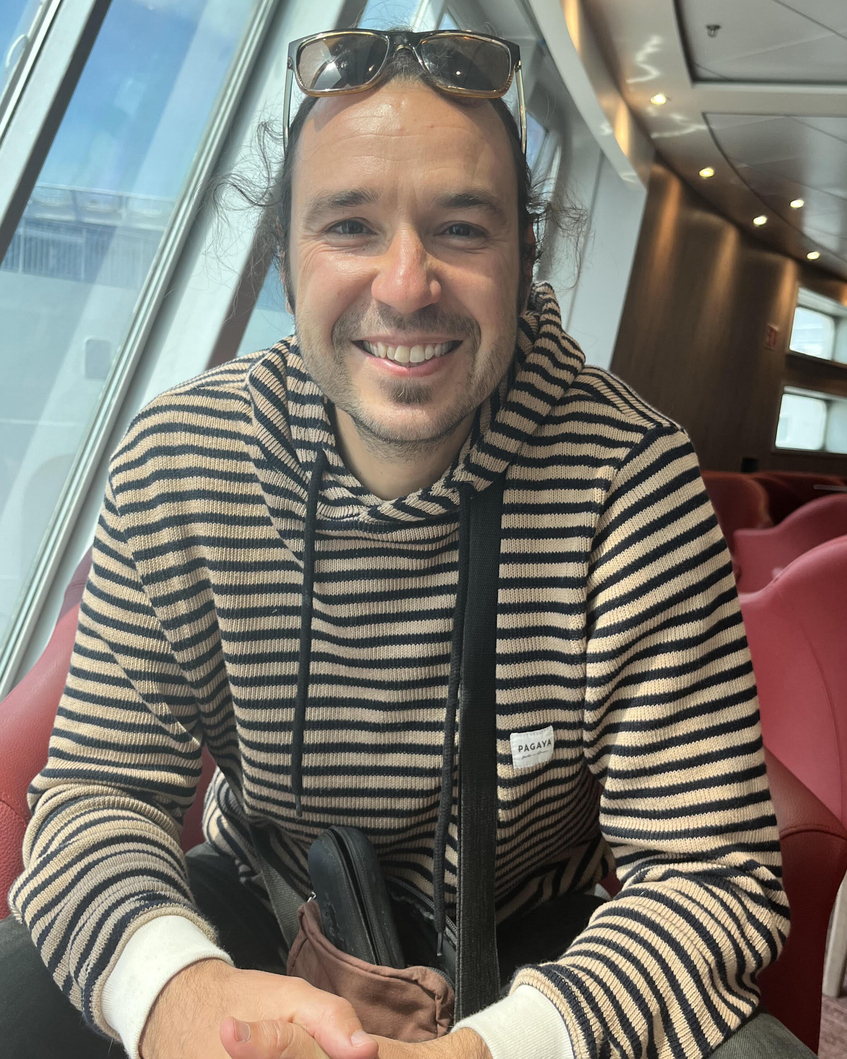Keynotes
Adriano Lameira, ApeTank, Department of Psychology, University of Warwick, UK

Dr. Adriano Lameira is an Associate Professor and UK Research & Innovation Future Leaders Fellow at the Department of Psychology, University of Warwick, UK, where he leads the ApeTank, a research lab dedicated to the study of the origins of human behaviour and mind, with a focus on shedding light on language origins, dance and music evolution, and the precursors of imagination. He obtained his PhD at the University of Utrecht (Netherlands), followed by a Junior Research Fellowship at Durham University (UK) and a Marie Skłodowska-Curie Fellowship at the University of St Andrews (UK) before settling in Warwick, a lush campus-based university set in the English Shakespearean countryside and a spin-off of the neighbouring University of Oxford. Adriano and his team study great ape communication, cognition and cultures both in the wild (the peat-swamps of Borneo and low mountain rainforests of Sumatra that harbour the last remaining populations of wild orangutans) and in captivity across Europe and American zoo, complemented with comparative research with children at the department’s babylab. Beyond tackling fundamental questions about the nature and evolution of human mind’s building blocks, the ApeTank is committed to using new research methods and evidence for advanced cogno-communicative capacities in great apes to (i) improve primate welfare & husbandry in captivity, (ii) advocate primate conservation & protection in the wild, (iii) inform superior bio-inspired computer models and AI applications and (iv) advise stakeholders and law-makers.
The ape and the first word: Advances in deciphering language evolution
Why, within a natural world teeming with examples of remarkable communication, has language only evolved in one lineage? Language fundamentally transformed how our species transmits information and knowledge, changing the face of the planet. Yet its origins remain obscure. Language doesn’t fossilize, and thus, won’t ever be unearthed from an archeological dig. To decipher the puzzle of language evolution, one is bestowed with the task of first deciphering the vocal communication systems of our closest living relatives – nonhuman great apes – the best living models to study and understand the form and function of the precursor system used directly by our first verbal ancestors. Here, I will present some of the most recent strides and findings on the structure and combinatorics of the vocal system of wild orangutans, the only great ape besides humans to combine consonant-like and vowel-like calls into word-sized combination, which in turn combine into sentence-long strings. These new strands of evidence unveil behavioral feedstock for the emergence of several features and capacities classically considered uniquely human or linguistic, challenging notions of a recent all-or-nothing quasi-mystical event at the origin point of language. Instead, each new discovery supports an ape-human vocal-verbal continuum deeply rooted in the communicative, cognitive and cultural capacities of ancient hominids, as predicted by evolution by means of natural selection. Shared ancestry between the communication systems of great apes and humans highlights the difficulty of decoding one system without identifying links and parallels to another closely related and well-understood system. In this sense, language serves as a Rosetta Stone of sorts for deciphering great ape communication. This raises the possibility that some animal communication systems may forever remain undecipherable due to a long, independent evolutionary path that has made them too dissimilar to any system humans might eventually understand. Similar to how the Rongorongo script of Easter Island and the Linear A script of Crete remain unsolved, some animal communication systems may forever elude human understanding. Evolution should, thus, inform and guide all efforts to decipher animal communication.
Marisa Hoeschele, Austrian Academy of Sciences (OeAW) | ÖAW · Acoustics Research Institute

Marisa Hoeschele completed a PhD in Psychology with a specialization in Comparative Cognition and Behaviour at the University of Alberta in Edmonton, Alberta, Canada. She now leads the Biology Cluster at the Acoustics Research Institute of the Austrian Academy of Sciences, an interdisciplinary research-only institution with researchers from all different disciplines (e.g., mathematics, phonetics, physics, psychology, machine learning, biology) to address fundamental questions in acoustics. Her own research group, the Musicality and Bioacoustics group, studies parallels between humans and other animals in terms of their acoustic perception and production.
Decoding animal acoustic communication based on human language and music
Language and music are both critical aspects of human life and seem to emerge spontaneously in all human societies. This spontaneous emergence of language and music suggests that both have roots in human biology. Because we share biological origins and behavioral similarities with other species, we can use cross-species studies to learn more about both the roots of human language and music, and the purpose, depth, and meaning of non-human species-specific sounds. However, a lot of what we know about humans is based on anecdotal and subjective knowledge of our own minds, behaviours, and practices. If we want to make comparisons between humans and other animals, it is critical that we study humans the same way we study any other species. By doing so, we gain powerful insight into 1) how we might advance the study of the behaviours of other species, and 2) what combination of traits is required to make a species human-like. I will present two examples of how we have learned more about humans and made steps towards decoding animal communication by considering humans an acoustic animal. First, I will show how typical bioacoustic methods would fail if we apply them to human vocalizations, and how taking this into account has led us to identify units that are similar to consonants and vowels in budgerigar (Melopsittacus undulatus; a small parrot species) vocalizations. Second, I will show how comparative research supports the idea that cross-culturally shared properties of musical scales likely stem from the physics of vocal sounds.